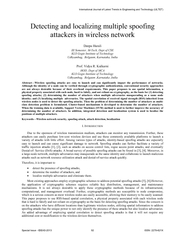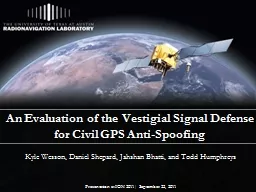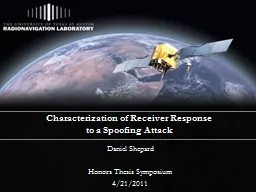PDF-Detecting and localizing multiple spoofing attackers i
Author : calandra-battersby | Published Date : 2015-05-02
Vidya R Kulkarni HOD Dept of MCA KLS Gogte Institute of Technology Udhyambag Belgaum Karnataka India AbstractWireless spoofing attacks are easy to launch an d can
Presentation Embed Code
Download Presentation
Download Presentation The PPT/PDF document "Detecting and localizing multiple spoofi..." is the property of its rightful owner. Permission is granted to download and print the materials on this website for personal, non-commercial use only, and to display it on your personal computer provided you do not modify the materials and that you retain all copyright notices contained in the materials. By downloading content from our website, you accept the terms of this agreement.
Detecting and localizing multiple spoofing attackers i: Transcript
Download Rules Of Document
"Detecting and localizing multiple spoofing attackers i"The content belongs to its owner. You may download and print it for personal use, without modification, and keep all copyright notices. By downloading, you agree to these terms.
Related Documents














